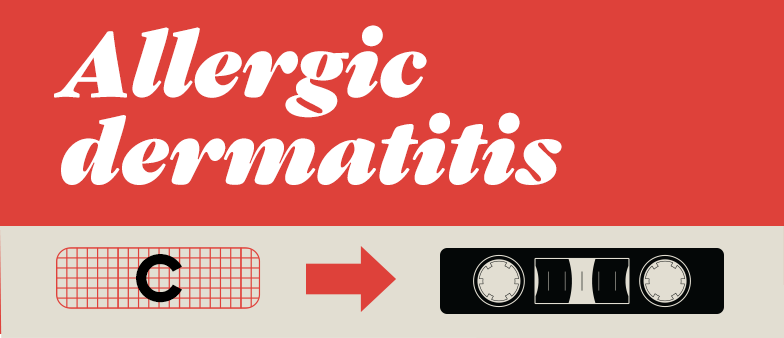
According to the Brazilian Society of Allergy and Immunology (Asbai), about 30% of Brazilians suffer from allergies.
For these people, dangers are everywhere; and the slightest contact with the agent can trigger a huge crisis.
But it doesn’t have to be this way. In this World Allergy Month, we bring you important information to identify, prevent, and treat allergies – whatever they may be.

Imagine that your body is a building; and your immune system is the doorman. When a visitor it doesn’t know tries to enter the building, instead of trying to identify it, it not only blocks the entrance but also calls the security company, the police, activates the fire alarm…
This is more or less how it works with allergy: your immune system reacts in an extreme way to a substance that comes into contact with your body. This extreme pattern can be characterized by inflammation that causes a variety of symptoms, ranging from itching and sneezing to swelling of the glottis and anaphylactic shock (which can cause death).
Although it sounds complex, allergies are very common – especially respiratory allergies.



Respiratory allergies cause inflammation in the major respiratory channels: sinuses (allergic sinusitis), nasal mucosa (allergic rhinitis) and throat (allergic pharyngitis). The most common types are listed below.
Triggering Agents: Dust mites, dust, pollution, mold, and cigarette smoke, for example.
Symptoms: Sneezing fits, runny nose, nasal constipation, and cough, among others.
Tips to avoid respiratory allergies:
• Airing up home environments on a daily basis
• Avoiding mold outbreaks
• Cleaning the house with a damp cloth
• Washing long-stored clothes
• Avoiding stuffed animals, pillows, curtains, carpets, books, newspapers, and objects that collect dust
Is it RESPIRATORY ALLERGY or COVID?
Some symptoms of respiratory allergies can be mistaken for the new coronavirus. So it is important to be aware of the symptoms and also whether there has been contact with someone who has covid-19 – if you have a fever, with or without shortness of breath, seek advice.



Although hair from pets such as dogs and cats can also trigger respiratory allergies due to dust mites, there are other allergy triggers. Through their skin, urine, or saliva, these pets eliminate certain proteins that contain allergenic substances.
So even if animal hair is not the main cause of the allergy, it can carry these types of proteins.
Symptoms: Itchy throat and nose, dry cough, runny and itchy nose, red and itchy eyes, asthma, and difficulty breathing.
Tips to avoid pet allergies:
• Prevent pet from sitting on sofas and going into the allergic person’s room
• Vacuum the rooms frequently
• Avoid direct contact with animals (hugging, holding)
• Increase the frequency of bathing them and brushing the pet’s teeth
• Brush the pet’s fur outside the house to prevent debris from spreading.

The skin is the largest organ of the body, and not coincidentally, it is the target of many allergy triggers on the hands, feet, face, arms, armpits, neck, legs, back, or belly.
Main Triggers: Insect bites, cleaning products, cosmetics, contact with metals (jewelry), fabrics, latex, plants, chemicals, among others.
Symptoms: Itching, redness, scaling, irritation, burning, spotting, and rashes.
To avoid this type of allergic crisis, it is important to pay attention to everything that comes into contact with your skin, making a note of what you have had contact with so you can create a list of triggering agents, because reactions may not appear immediately.



The pollen spores (present in flowers, plants, and trees) are small, light, dry, and easily carried by the wind – especially in the fall (low humidity) and spring (increased presence of flowers).
As a result, pollen spreads throughout the environment and causes various respiratory disorders.
Symptoms: runny nose, watery and irritated eyes, sneezing, itchy nose or throat, and nasal congestion.
Tips to avoid allergy to pollen:
• Avoid outdoor activities in the morning and early evening (periods when pollen counts are highest)
• When you arrive home, shower, change your clothes and take off your shoes
• Wear a mask when you are outdoors.
• Whenever possible, avoid exposure by keeping the environments where you stay isolated from the outside when possible.

This type of allergy is also known as a Hypersensitivity Drug Reaction (HDR), and its symptoms usually appear within a few minutes (when the drug is inhaled or injected) or up to a few hours when it is oral or topical.
It is necessary to differentiate the allergy from the adverse reactions that some medicines can generate and that are described in the package insert of each one. Among the medications that can cause allergies are: antibiotics, anticonvulsants, insulin of animal origin, contrast for imaging exams, aspirin and anti-inflammatory drugs, painkillers, chemotherapy drugs; HIV medicines and muscle relaxants.
The symptoms of drug allergy can be mild, such as itching and redness of the skin, fever, runny nose, red, watery and swollen eyes, difficulty opening the eyes, or severe, such as swelling of the tongue or throat, difficulty breathing, dizziness, fainting sensation, mental confusion, nausea, diarrhea, and increased heartbeat.
In addition to seeking medical help in the presence of any of the above symptoms, it is critical that a physician evaluate the patient’s condition and history to determine whether or not the patient has a drug allergy.



In this type of allergy, certain substances present in food and drinks trigger inflammatory reactions in the body.
The most common allergenic foods are: Seafood (shrimp, lobster, and other shellfish), oilseeds such as peanuts and tree nuts, soy, milk, and gluten.
Symptoms: Itching and redness of the skin, swelling of the lips, tongue, ears or eyes, canker sores, stuffy and runny nose, throat discomfort, abdominal pain and excess gas, diarrhea or constipation.
Seafood especially, in rarer cases, can cause anaphylactic shock.
To avoid allergic crises, the most important thing is to identify the foods that cause them and stop consuming them whenever possible.
Intolerance or allergy?
Because it causes similar symptoms, allergy is often mistaken for food intolerance. But there are different cases that require different approaches.
With allergies, the body’s response when in contact with the food is immediate (about half an hour). With food intolerance, on the other hand, the food is not digested correctly, and thus the symptoms appear mainly in the gastrointestinal system. In both cases, it is necessary to follow up with a doctor and avoid the allergy-triggering foods.

In very rare situations, our body can also show these extreme reactions when coming into contact with water, sweat, cold, and even near Wi-Fi networks.

Severe Reactions
Although the most common reactions to allergies are sneezing, itching, runny nose, and are easily treated, there are cases when they are severe and can be life-threatening for the allergic person.
If you notice the symptoms below, seek help and call an ambulance:
• Increased heart rate
• Difficulty breathing and coughing and wheezing in the chest
• Stomach pain
• Nausea and vomiting
• Swelling of the lips, tongue, or throat
• Pale skin and cold sweat
• Body itching
• Dizziness and fainting

The allergologist
is responsible for identifying what type of substance a person is allergic to, through a variety of tests and examinations. This allows the allergic person to avoid contact with these materials as much as possible in the future.
This specialist also prescribes treatments and medication to relieve symptoms and improve the quality of life for allergic people. In some cases, the allergologist may also interact with the immunologist, since some allergies can be related to autoimmune diseases or immunodeficiencies.

More than treating the symptoms, it is necessary to find out exactly what acts as a trigger for the allergic reactions. For this reason, allergologists may carry out examinations and tests, such as skin tests, for example.
During the procedure, small amounts of allergenic substances are placed in contact with the skin, in a controlled way, so that the triggers can be accurately identified.
Blood tests can also help in the diagnosis.
IgE Test
Immunoglobulin E (IgE) is a protein present in the blood, normally found on the surface of some blood cells. Depending on the concentrations, it can help in the diagnosis of allergies:
Total IgE:
Indicates that there is an allergy, but does not specify the type.
Specific IgE:
Test that identifies the antigen to which a person is allergic.


During the acute phase, the main medications are:






Those who suffer from allergies usually have a “first aid kit” for when the crisis strikes:
antihistamines, decongestants, and even corticoids are used.
They usually mitigate the crises and prevent worsening, it is true, but they also present many risks and can even trigger drug allergies!




